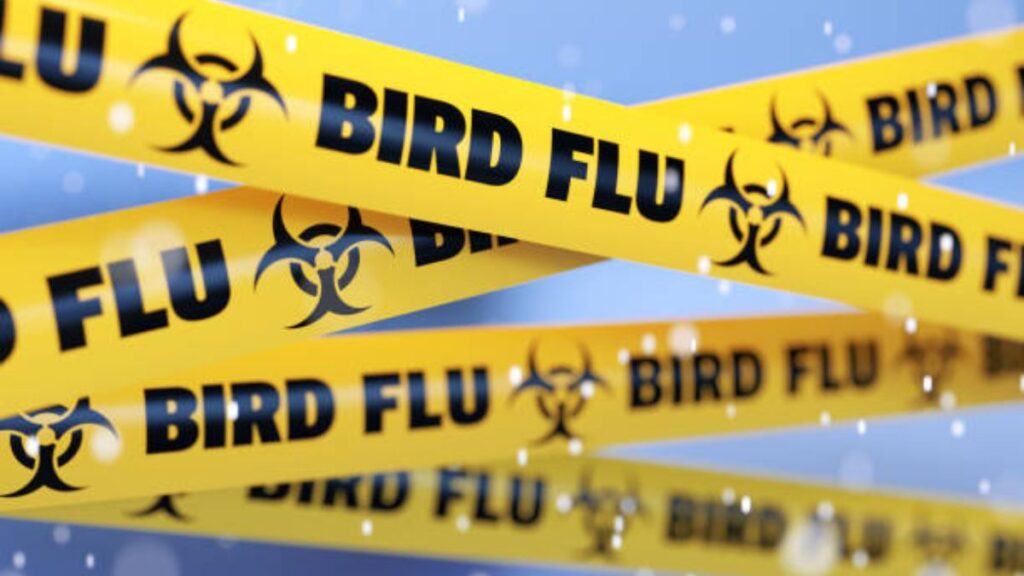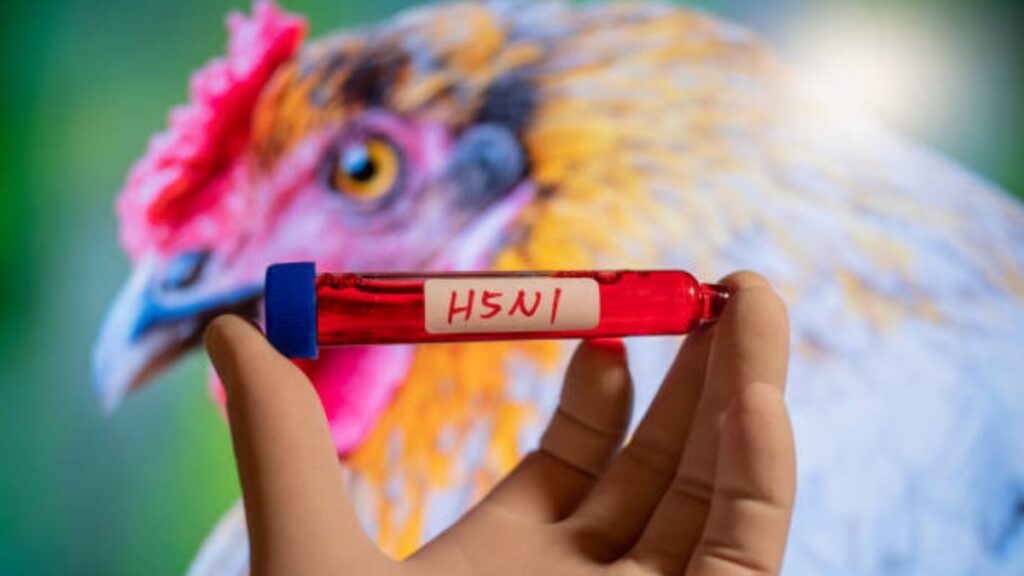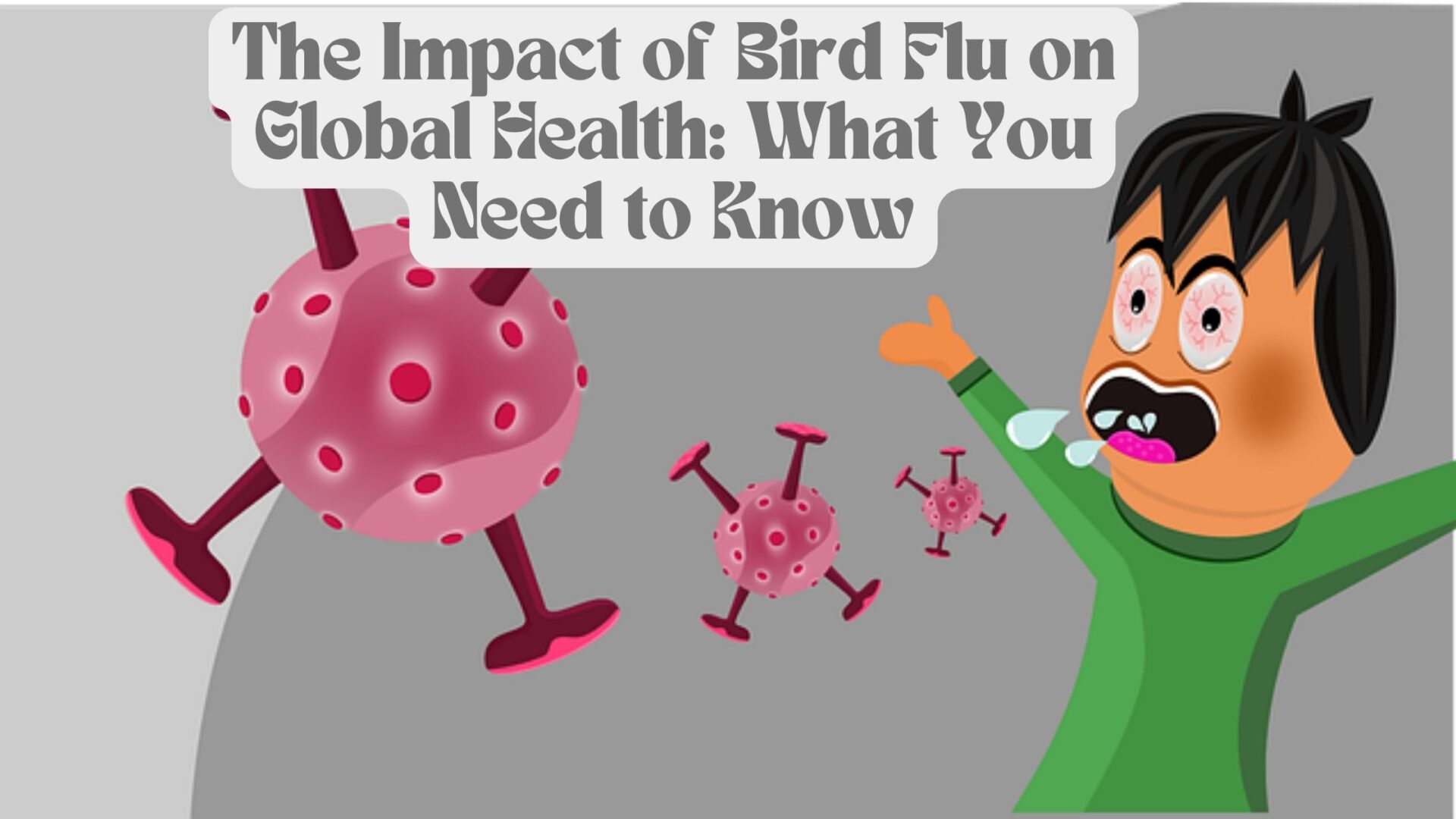Introduction
The Impact of Bird Flu on Global Health: What You Need to Know

Understanding the global health impact of bird flu, or avian influenza, is essential for preventing and managing outbreaks. This viral infection primarily affects birds but can also spread to humans and other animals. The most prevalent strains affecting humans are H5N1 and H7N9. Recognizing the significance of bird flu in global health is crucial for developing effective strategies to minimize its impact and mitigate potential risks to both humans and the animal population.
Impact of Bird Flu:
Bird flu, caused by influenza viruses that primarily infect wild aquatic birds like ducks and geese, can spread to domestic poultry, causing significant illness and high mortality rates. In rare instances, the virus can also infect humans, leading to serious respiratory illnesses.
Transmission of Bird Flu:
Transmission of bird flu viruses occurs through contact with infected birds’ saliva, nasal secretions, or feces. Human infections typically result from direct contact with infected birds or contaminated environments. Although human-to-human transmission is uncommon, it can occur in close-contact settings.
Symptoms of Bird Flu in Humans:
The symptoms of bird flu in humans vary in severity and can include:
- Fever
- Cough
- Sore throat
- Muscle aches
- Headache
- Shortness of breath
Severe cases may lead to pneumonia, acute respiratory distress syndrome, and even death. Seeking prompt medical attention is crucial for effective symptom management and improved outcomes.
Global Impact of Bird Flu
Human Health Concerns:
- Bird flu poses a significant threat to global health due to outbreaks resulting in serious illnesses and high mortality among humans.
- The H5N1 strain has a high mortality rate of approximately 60%.
- The potential for a pandemic is a major concern due to the rapid spread and emergence of new strains.
Economic Consequences:
- Bird flu outbreaks have a profound economic impact, particularly affecting the poultry industry.
- Culling infected birds, trade restrictions, and decreased consumer demand lead to substantial losses.
- Controlling outbreaks and compensating farmers strain government resources.
Challenges for Public Health Systems:
- Bird flu outbreaks can overwhelm public health systems, especially in nations with limited healthcare infrastructure.
- Rapid response, surveillance, and medical treatment divert resources from other essential health services.
Preventive Measures:
- Preventing bird flu requires a comprehensive approach, including:
- Monitoring and surveillance of bird populations.
- Implementing biosecurity measures in poultry farms.
- Vaccination of poultry.
- Public education on avoiding contact with infected birds.
Individual Precautions:
- For individuals, the following precautions are recommended to minimize the risk of infection:
- Avoiding live bird markets.
- Practicing good hygiene.
- Cooking poultry thoroughly.
- Reporting sick or dead birds to authorities.
Can Bird Flu Lead to a Pandemic?
To comprehend the potential of bird flu, or avian influenza, to cause a pandemic, it is crucial to explore its transmission, mutation potential, and current control measures.

Understanding Bird Flu
Types of Bird Flu
Bird flu viruses can be classified into two main categories:
- Low Pathogenic Avian Influenza (LPAI): This type causes mild symptoms in birds.
- Highly Pathogenic Avian Influenza (HPAI): This type leads to severe disease and high mortality rates in birds.
The H5N1 strain is the most well-known type of HPAI, posing a significant concern due to its severe impact on poultry and occasional transmission to humans.
Human Infection
Human infections with bird flu are rare, but they can occur through direct contact with infected birds, contaminated environments, or, in some cases, by consuming undercooked poultry products. The primary concern lies in the virus’s ability to mutate, potentially facilitating efficient human-to-human transmission.
Pandemic Potential: Bird Flu Strains
Influential Factors:
- Transmission Efficiency:
- Pandemic potential hinges on a bird flu strain’s ability to mutate and spread effectively among humans.
- Virulence:
- The severity of a bird flu strain’s symptoms in humans impacts its potential for widespread impact.
- Immune Response:
- Emerging strains may encounter populations with limited or no preexisting immunity, facilitating their spread.
Historical Perspective:
- Past outbreaks of bird flu strains, like H5N1 and H7N9, have resulted in limited human-to-human transmission.
- Despite this, these outbreaks underscored the potential for severe illness and mortality associated with bird flu viruses.
Pandemic Preparedness: Avian Influenza
Surveillance and Early Detection:
- Continuous monitoring of avian influenza outbreaks in poultry and wild birds is vital.
- Early identification of mutations that could increase human transmission allows for timely interventions.
Vaccination and Antiviral Stockpiles:
- Developing vaccines for bird flu strains and stockpiling antiviral drugs are key strategies.
- Vaccination programs for poultry can reduce the spread of the virus to humans.
Public Health Preparedness:
- Countries must have robust public health infrastructure to respond effectively to potential outbreaks.
- This includes clear communication channels, quarantine measures, and international cooperation.
Current Status and Future Considerations:
- While avian influenza has pandemic potential, current strains lack the necessary mutations for efficient human-to-human transmission.
- Continued surveillance, research, and preparedness are essential to mitigate this risk.
To control bird flu outbreaks, a comprehensive approach is taken to prevent the spread of the virus among birds and minimize the risk of transmission to humans. Here are the key measures being implemented:
- Surveillance and Monitoring:
- Active Surveillance: Continuous monitoring of poultry and wild bird populations for signs of avian influenza.
- Regular Sampling and Testing: Systematic sampling and testing of birds to detect the presence of the virus early on.
- Rapid Detection: Early warning systems and prompt diagnostic testing to quickly identify and confirm outbreaks.
- Biosecurity Measures:
- Farm-Level Biosecurity: Implementation of strict biosecurity protocols on poultry farms, including access control, equipment and vehicle disinfection, and minimizing contact with wild birds.
- Hygiene Practices: Ensuring proper hygiene practices, such as hand washing and using protective clothing, among farm workers.
- Movement Restrictions:
- Poultry and Equipment Movement Restrictions: Limiting the movement of poultry, poultry products, and equipment from affected areas to prevent virus spread.
- Quarantine Measures: Enforcing quarantine for affected farms and regions to contain the outbreak.
- Vaccination Programs:
- Research and Development: Ongoing research to develop effective vaccines for poultry.
- Vaccination Implementation: Vaccination of poultry populations in high-risk areas to protect birds and reduce virus circulation.
- Education and Awareness:
- Public Awareness Campaigns: Educating the public about bird flu prevention measures and the importance of reporting suspected cases.
- Industry Training: Providing training to poultry farmers, veterinarians, and other professionals on biosecurity practices and disease recognition.
- International Collaboration:
- Global Surveillance Networks: Collaborating with international organizations and countries to share surveillance data and best practices.
- Joint Research Initiatives: Engaging in joint research projects to advance knowledge about bird flu and develop effective control strategies.
Managing Avian Influenza: Culling, Compensation, and Vaccination

Culling Infected Birds:
- Rapidly culling infected and exposed birds to contain the outbreak and prevent its spread.
- Safely and hygienically disposing of carcasses to prevent environmental contamination.
Compensation for Farmers:
- Providing financial compensation to farmers for culled birds to encourage reporting and adherence to control measures.
Vaccination:
Vaccination Programs:
- Developing and deploying vaccines for poultry in regions at high risk of avian influenza.
- Conducting vaccination campaigns to create herd immunity and reduce virus prevalence.
Monitoring Vaccine Efficacy:
- Continuously monitoring vaccine effectiveness and updating them as needed to match circulating strains.
Public Awareness and Education
Raising Awareness:
- Educate farmers, poultry workers, and the general public about avian influenza risks and biosecurity measures.
- Provide information on recognizing symptoms in birds and humans and steps to take if an outbreak is suspected.
Promoting Safe Practices:
- Encourage safe handling, cooking, and consumption of poultry products to minimize transmission risks to humans.
- Advise people to avoid contact with sick or dead birds and report suspicious cases to authorities.
International Cooperation
Collaboration Among Countries:
- Share information and coordinate response efforts through international organizations (WHO, FAO, OIE).
- Participate in joint surveillance and research initiatives to understand the virus better and improve control measures.
Trade Regulations:
- Implement international trade regulations to prevent avian influenza spread through poultry and poultry products.
- Ensure imported poultry products meet safety standards.dards to protect domestic flocks.
Avian Influenza Research and Response
Understanding the Virus:
- Conduct in-depth studies of avian influenza viruses to gain insights into transmission patterns, mutation potential, and impact on bird species and humans.
- Develop advanced diagnostic tools, vaccines, and antiviral treatments to enhance preparedness and response capabilities.
Optimizing Response Strategies:
- Evaluate and refine control measures based on lessons learned from previous outbreaks to ensure effective responses.
- Invest in public health infrastructure to enable rapid and effective responses to future outbreaks.
Comprehensive Measures for Avian Influenza Control:
By implementing these comprehensive measures, authorities aim to:
- Control bird flu outbreaks effectively, minimizing the risk to poultry populations and human health.
- Protect the agricultural industry and ensure food security by safeguarding poultry populations.
- Promote public health by reducing the risk of transmission from birds to humans.
Conclusion
The ongoing threat posed by bird flu to global health requires a comprehensive understanding of its transmission pathways, symptoms, and overall impact. Collaborative endeavors involving governments, public health organizations, and individuals are paramount in mitigating the consequences of bird flu, safeguarding not only human health but also ensuring the well-being of wildlife.
References
- Centers for Disease Control and Prevention (CDC). (2023). Avian Influenza in Birds. Retrieved from https://www.cdc.gov/flu/avianflu/avian-in-birds.htm
- World Health Organization (WHO). (2023). Avian Influenza: Fact Sheet. Retrieved from https://www.who.int/news-room/fact-sheets/detail/avian-influenza
- Food and Agriculture Organization of the United Nations (FAO). (2023). Avian Influenza. Retrieved from http://www.fao.org/avianflu/en/
- Mayo Clinic. (2023). Bird Flu (Avian Influenza). Retrieved from https://www.mayoclinic.org/diseases-conditions/bird-flu/symptoms-causes/syc-20370944
- National Institutes of Health (NIH). (2023). Avian Influenza A (H5N1) Infection in Humans. Retrieved from https://www.nih.gov/news-events/news-releases/avian-influenza-h5n1-infection-humans
- Centers for Disease Control and Prevention (CDC): Avian Influenza: Control and Prevention
- World Health Organization (WHO): Avian Influenza – Control Measures
- Food and Agriculture Organization (FAO): Approaches to Control Avian Influenza
